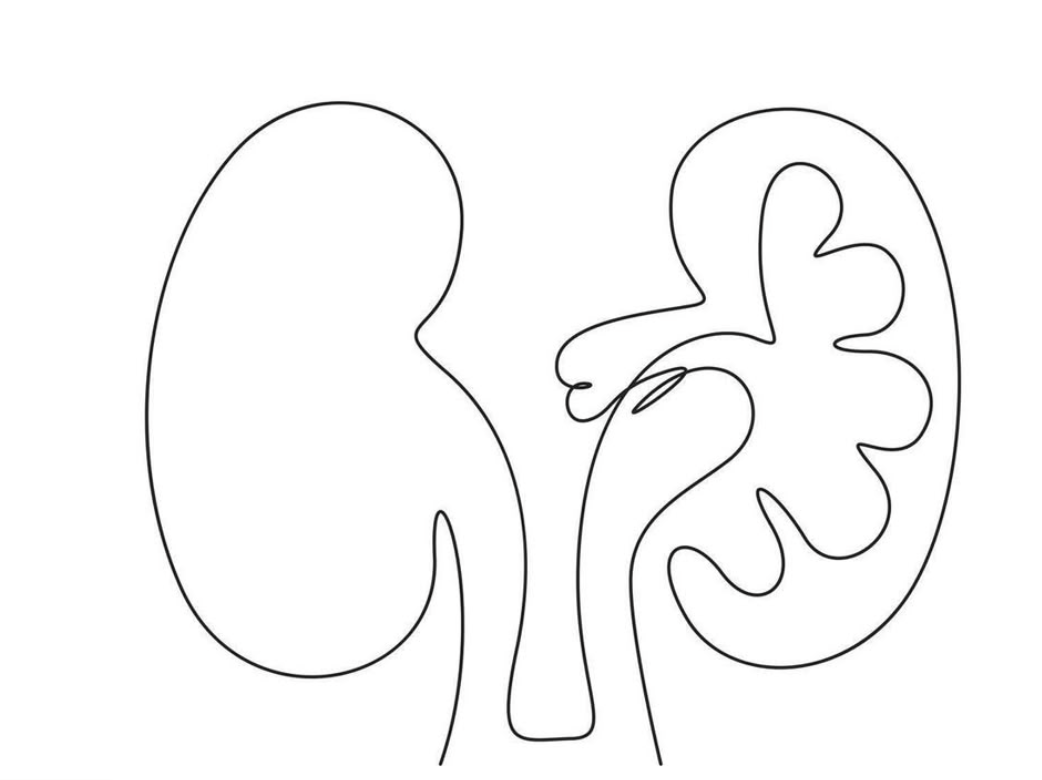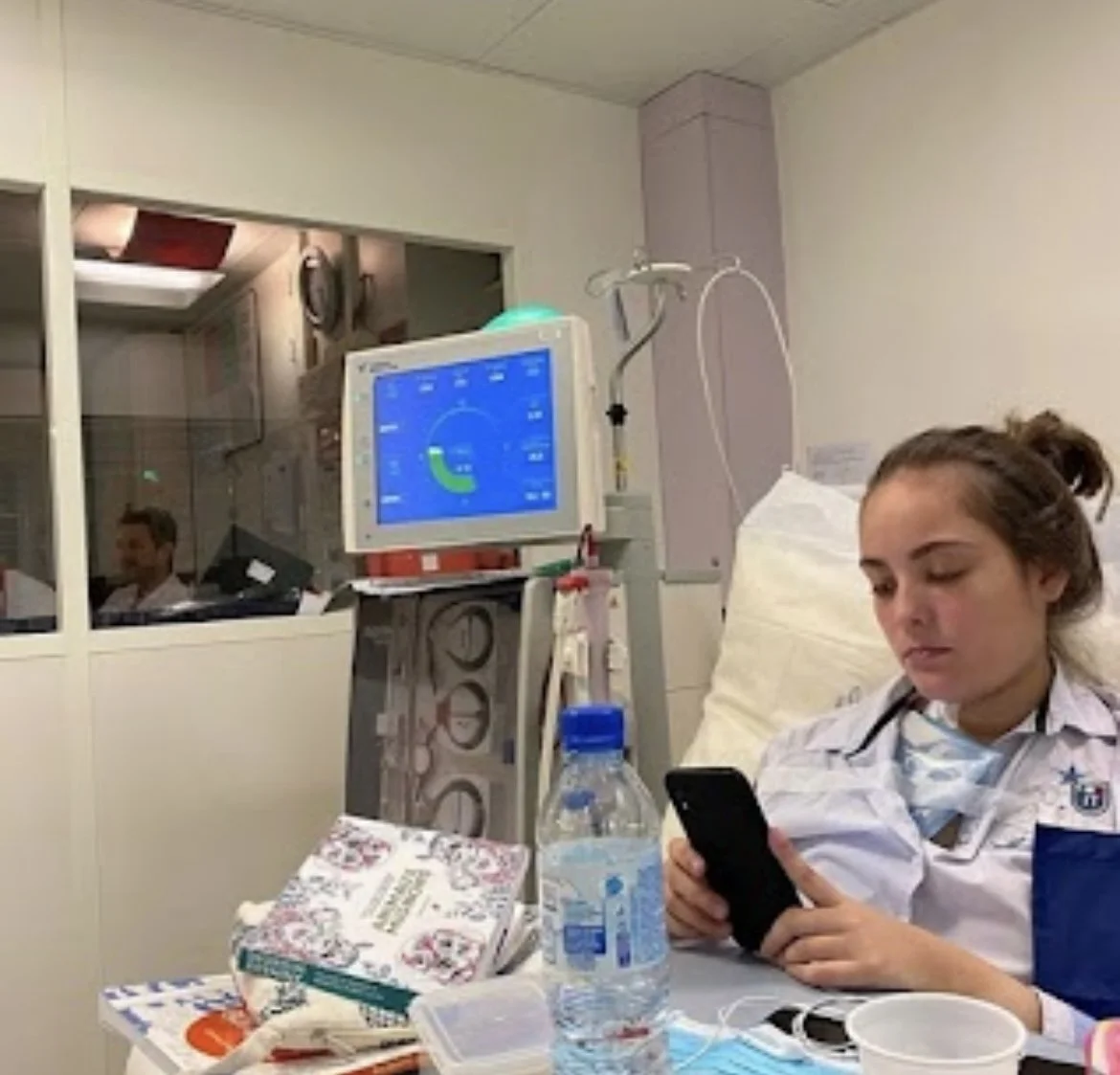A new life
Well, since we last spoke, Tube Titty has been part of me. Giving it a name made it easier to accept, like if I was stuck with this thing, it at least deserved a personality.
At the beginning, I thought dialysis would be easier. Spoiler alert: it wasn’t. Looking back, I can finally say I’ve walked that road and, fingers crossed, never have to again. But those first 15 to 30 days after the catheter was placed were brutal. My stitches were pulling, I could feel the tube in my neck, and even holding my head straight was a challenge.
For anyone who doesn’t know, a catheter is used for hemodialysis. They put it into a vein in your neck, chest, or groin so the machine can clean your blood. My first sessions were awful. Everything was raw, stitched, disinfected, and burning. The kind of pain that’s so sharp it almost feels satisfying, because deep down all you want is for them to rip that foreign object out of you. But no, this was just the beginning. I had to learn to see it as part of me, like being a human phone charger, plugging in three times a week to recharge.
My very first dialysis session was at Georges Pompidou hospital, the day after my catheter was placed. I was terrified, but in the end, it didn’t really hurt. What I remember most is the smell of disinfectant, and that the nurses had to wear these blue suits, glasses, and even shoe covers. I felt like ET the extraterrestrial. The smell stuck with me. The session only lasted two hours because my kidneys were still “half-working.” Afterward, I napped and then said my goodbyes to the nurses. Not forever-goodbyes, more like “see you later” because I knew I’d be back.
Instead of a Friday night out like most people my age, I went home exhausted, ready to face my new reality.
That weekend we went to visit my new dialysis center: Clinique de l’Alma, right by Invalides, one of my favorite neighborhoods in Paris. The streets were empty, masks everywhere, it felt eerie. We took the elevator to the 7th floor — “Dialyse.” My hands were shaking. This wasn’t totally new anymore, but it wasn’t something I could escape either.
Inside, we met Professeur Anglade Labatide. When she saw me, she looked shocked. And honestly, I got that look all the time from then on. People couldn’t believe someone so young needed dialysis. But the truth is, in the US around 90,000 people are waiting for a kidney transplant (1,200 of them children) and in France about 20,000. It’s not rare, just shocking to see it in front of you. From that first meeting, though, she and I built a real connection.
She showed me around, and this place quickly became my second home. Most of the patients were older. There was a French man with Japanese roots in his late 80s, a woman in her 60s who had already been transplanted three times, another woman in her 70s with a few health issues, and two men in their 60s — one Spanish-looking guy who smoked like a chimney and another who worked at SNCF. The whole room looked like a scene out of The 100, blood running through tubes, machines keeping us alive.
And then there were the nurses. Charlotte and Renato. They welcomed me the first time I visited, and they quickly became the reason dialysis didn’t feel so lonely. They were my age, full of energy, and somehow knew exactly how to bring light into a heavy room. Renato would bring Portuguese pastries, Charlotte and I would gossip about anything and everything. Unlike most patients, I actually became close to my nurses. I was like the “popular kid” in the center for once in my life. Even after leaving, I stayed in touch with Charlotte — we still chat on Facebook.
My schedule ended up being Monday, Wednesday, and Friday evenings from 6 to 10pm, sometimes even later. At first my mom came with me, and we’d walk along the Seine at sunset to the clinic. It almost made it feel normal. But once COVID hit, she couldn’t come in anymore. Eventually, I had to take an ambulance. And let me just say, being in an ambulance is not what you think. It was basically a maxi-taxi that smelled like cigarettes, not the glamorous siren ride I imagined as a kid.
My routine at the clinic always started the same. I arrived early, greeted everyone, and sat with the other patients in the waiting room, which honestly felt like waiting for a bus. When it was finally my turn, I went to my little glass-box room — special for me because of the catheter, which had a higher risk of infection. Everyone else shared big rooms together, and while I sometimes felt left out, I also had my own TV, which felt like a win. Then I would weigh myself, which meant facing the reality of the 3 to 5 kilos of water my body had retained over the week. After that, I got “plugged in.”
The next four hours had their own rhythm. I usually started with an episode of Les Marseillais or Les Anges. Then I would color to relax my mind. After that, I would move on to watching movies, the kind of classics you are supposed to see at least once in your life.
Once the session ended, the nurses unhooked me, I weighed myself again, and just like that the 3 to 5 kilos were gone. The ambulance would take me home, and most nights, no matter how late it was, my mom was waiting for me so we could eat dinner together.
Weirdly, dialysis became life. It was my routine. I told myself I was just going to “work” or “school.” It was simply what I had to do. And in that routine, I found people I didn’t want to say goodbye to when the time came.
Dialysis taught me I wasn’t alone. Even though I was the youngest in the room, I laughed, connected, and shared with people who understood this fight. It even made me wonder if one day I might want to become a dialysis nurse.
So, to the amazing nurses at Clinique de l’Alma in Paris, thank you. For your patience, your humor, and for putting up with me (which isn’t always easy). You made those endless hours lighter, and you made me feel like I belonged.

